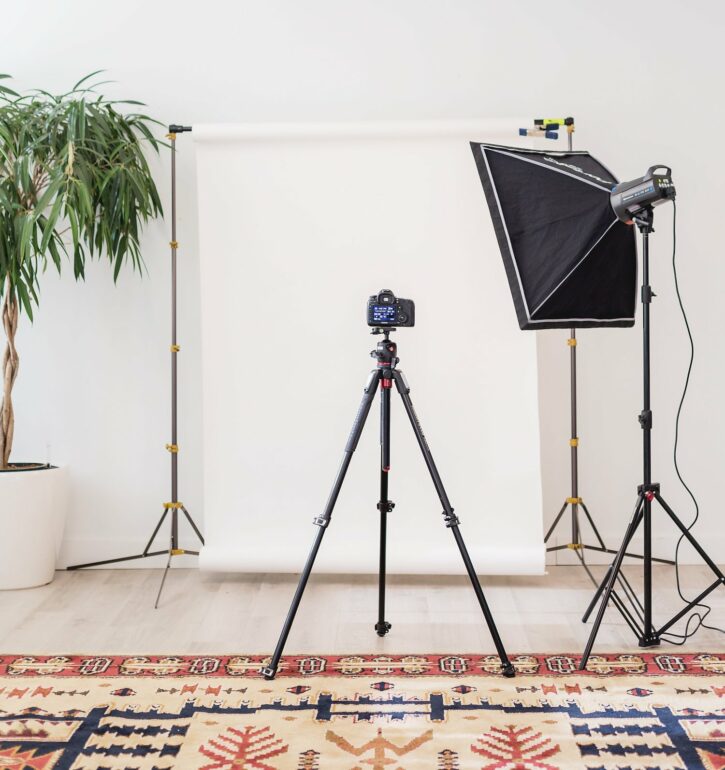Thanks to Andrew Maffettone of Seller’s Choice for contributing this guest post on improving your product imagery.
When people shop online, your product is only as good as its pictures. Photos are one of the most powerful tools you have to create a compelling narrative which will convert your brand into sales. Product imagery is a key component of a complete brand strategy that can dominate e-commerce sites.
There is no such thing as a good product image. There are only images that contribute to compelling brand stories, and images that don’t. A non-blurry image with a white background may sell screwdrivers, but an out-of-focus shot in a forest might sell mountain bikes. The good image is the image that works. Consumers make decisions by locating products in values, goals, and strategies. Let’s go through four ideas to help you move toward compelling, story-driven images that sell products:
- Have a diverse portfolio of images to use for different situations.
- Use the right tools, either through in-house setups or outsourcing.
- Tell a story with bold images
- Work from images to brand, not brand to images
According to a Harvard professor, up to 95% of a consumer’s decisions take place in the subconscious mind. Good product imagery, therefore, is product imagery that goes beyond the logicality and linearity of language to touch those deeper emotional places to sell products.
1. Diversify your product imagery portfolio for different platforms

Once you get a lovely snapshot of that handbag, it’s tempting to just plaster that same product imagery all over Amazon, your business website, and social media. But each medium is different, and an appropriate product image on Amazon is probably not an ideal image for your website.
The three main places that product images will show up are e-commerce platforms, your website, and social media. The images you use on these sites should probably be done in increasing complexity, with e-commerce being the most simple and social media the most complex.
E-Commerce platforms
Because your images will be displayed against a bunch of others, there are two principles you want to follow. First, don’t be the ugly duckling or the odd image out. On an e-commerce marketplace, a busy image or one with too much creativity may look tacky and out of place. Second, don’t be too boring. You need just enough normality to blend into product results and the marketplace itself, but just enough pop to set yourself apart. It’s a fine line. Check out our guide to creating a perfect Amazon product image as a great example of this.
Brand website
Your own website is a space where product images can become more loose, colorful, and playful. Instead of trying to craft product photography to fit Amazon’s standards and win customers, you’re trying to tell a story from top to bottom using your entire website. Images here can use different backgrounds, more creative scenarios, and more complex designs. Skip the white background and showcase your products “in the wild.”
Social media
If it isn’t cool, you won’t get followers. If it doesn’t connect to the desired lifestyle, followers will leave. Product imagery on social media can have the highest level of creativity, complexity, and image crowding. Get some tips on how to gain traction from social media through our post on brands winning Instagram.
2. Use the right tools
Snapping a quick pic of a product up against a white wall using your smartphone is an acceptable way to sell your used golf clubs on LetGo, but it’s no way to run a business. Depending on your business model, you’ll either need to invest in the right photography and graphic design equipment or outsource the work to the many talented photographers and graphic designers out there.
In-house product photography
If you’re going to do it yourself, you’ll need to invest in a quality camera, some professional lighting and screens, and the right software to make the images pop. You could be looking at around a thousand dollars in startup costs, but of course, that thousand might represent a good investment depending on your business model. If you’ll need new images every couple of months, it will most likely be cheaper to buy your own gear than to outsource it to a photographer.
Outsourcing product photography
If you don’t have the gear, the talent, or the time, you’ll need to get help from a professional. When finding a photographer, look for someone who has the right vision for your brand. Don’t just ask about experience when shooting products — someone who has done 100 product shoots might still not “get” your brand. When interviewing, ask about their understanding of your product and the story or vibes it will take to sell it. You may need to hire someone different for photo editing. Also, some products may need graphic design done, which means you’ll have to invest in some 3D rendering services.
3. Tell a story with your product imagery
There’s no big secret involved in “good lighting” and “invisible background.” You’ll need these basic shots to showcase the product itself. But you don’t want your product photography only to showcase your product. You’re also trying to tell a story.
Your product photography should create a narrative that the consumer wants to be a part of. Images say “the kind of person who buys X is the kind of person who does Y.” For example, take a photo of your backpack in a library, and you’re saying “the kind of person who buys our backpack is the kind of person who goes to the library.” An image of your phone case at the beach says “the kind of person who buys our phone case is the kind of person who goes to the beach.”

Telling a story with images can drive sales in two ways: relevance and aspiration.
Relevant stories are narratives that a target customer is already living, and thus they can see themselves with the product. This strategy is especially useful for products that cater to a niche market. For example, if you’re selling an optional camping accessory, trade on a story of relevance by showing customers as they see themselves and insert your product in those scenarios.
Stories of aspiration are useful for products that don’t fit a specific niche market. If you’re selling clothing, for example, you’ll need to trade on stories of aspiration–the kind of person who wears our clothing has a lot of friends, travels a lot, or is in a relationship. Bank on the aspirations of the customer to drive the purchase.
Your product photography essentially creates a vibe through associations. Coffee and books symbolize leisure and intelligence, forested roads symbolize freedom and independence. Utilize the emotions of colors to convey the moods of your product. Use language in your copy and product descriptions that complements the story. Use a complete design strategy to solidify the story.
4. Make the brand match the product imagery

This may seem like an odd suggestion. After all, you’re supposed to know what your brand is, and then take pictures or create graphics that capture the essence of the brand. The thing is, e-sellers often aren’t good at clearly defining brands. You may have an idea of the brand in your head, but it doesn’t quite match your products or images. Then, when customers click through your pages, the product feels a little disjointed. The image doesn’t match the copy, or the brand doesn’t feel right.
Before starting on anything, get your team together to collaborate on what you want your final product to look like. Create stunning product images and then use those to cultivate a strong brand by using holistic branding techniques. Make your brand match your images, and you get a more coherent product narrative, which means more emotional buy-in and a higher conversion rate.
Conclusion
The most compelling product images work to tell a story. By having a diverse portfolio, you can customize those stories to match the platforms you sell on. Get the right gear or the right photographer, create a vibe, and then craft the brand around your images.

Andrew Maffettone is the Director of Marketing and Operations for Seller’s Choice, a full-service digital marketing agency for e-commerce sellers. Andrew is a digital strategy and marketing expert with over a decade of experience improving the online presence of e-commerce sellers all over the world.



